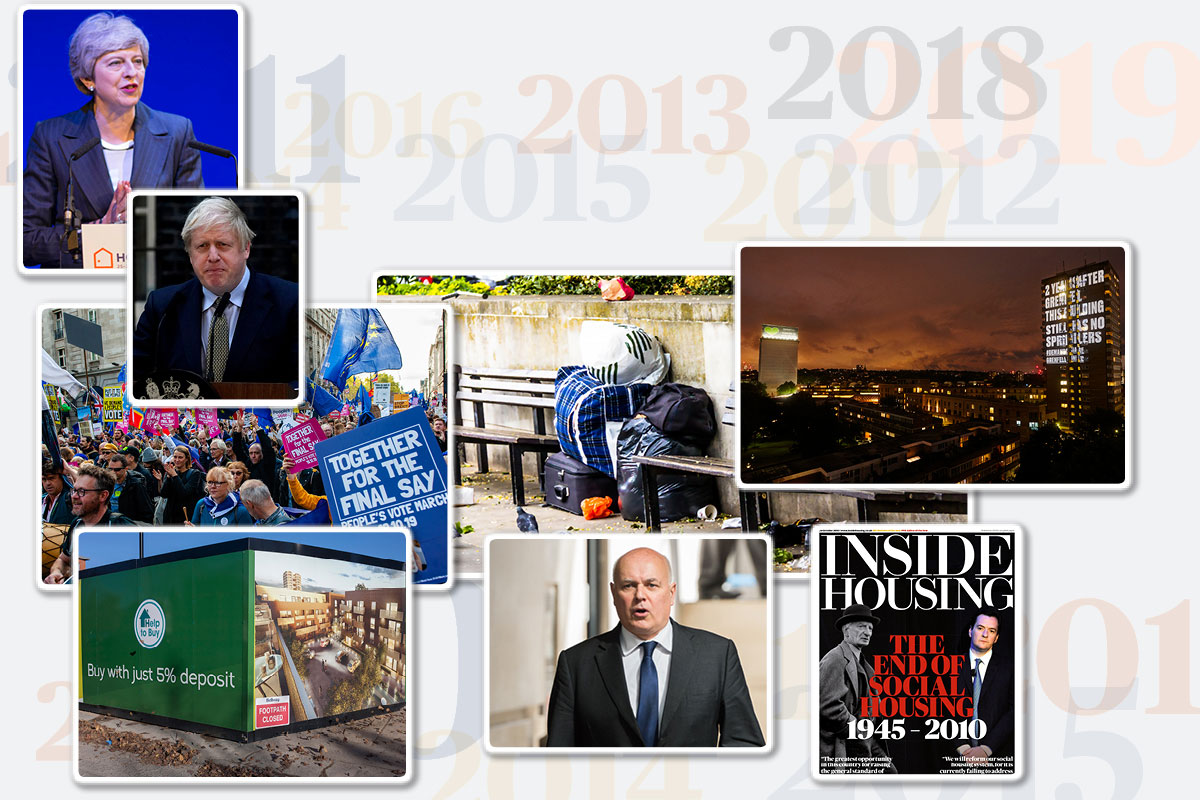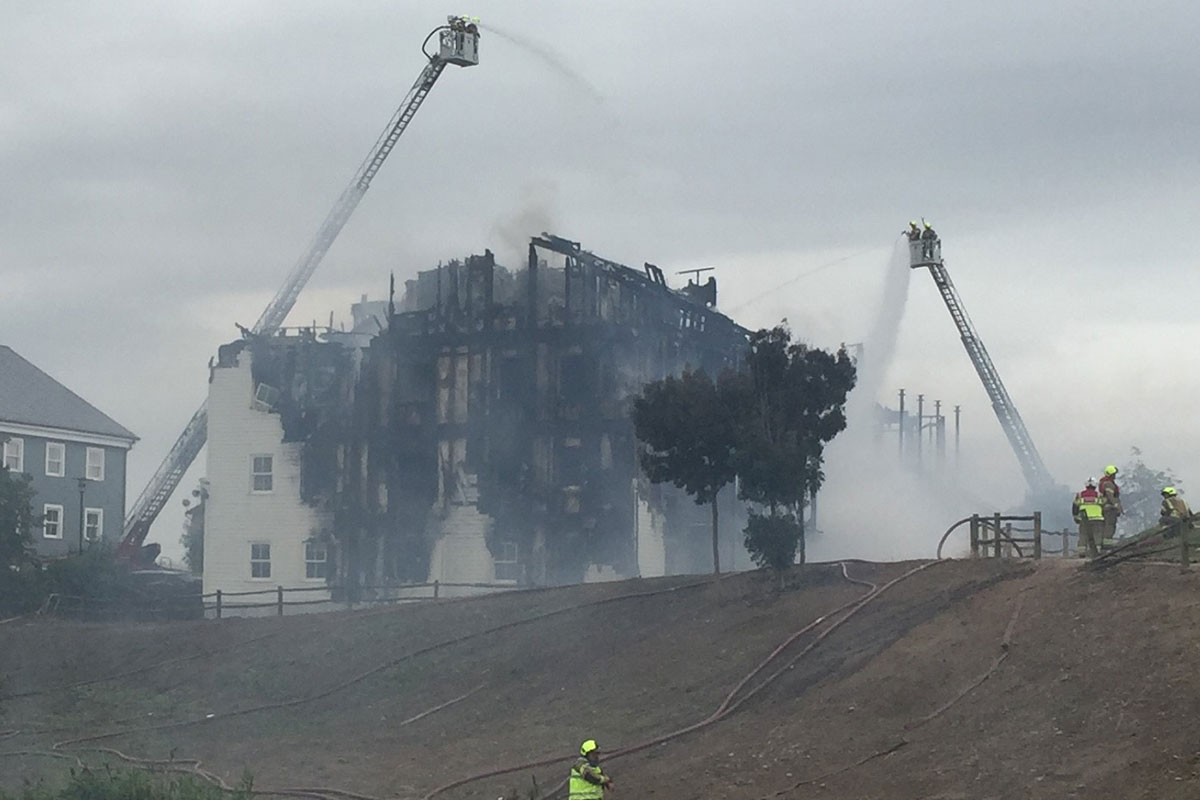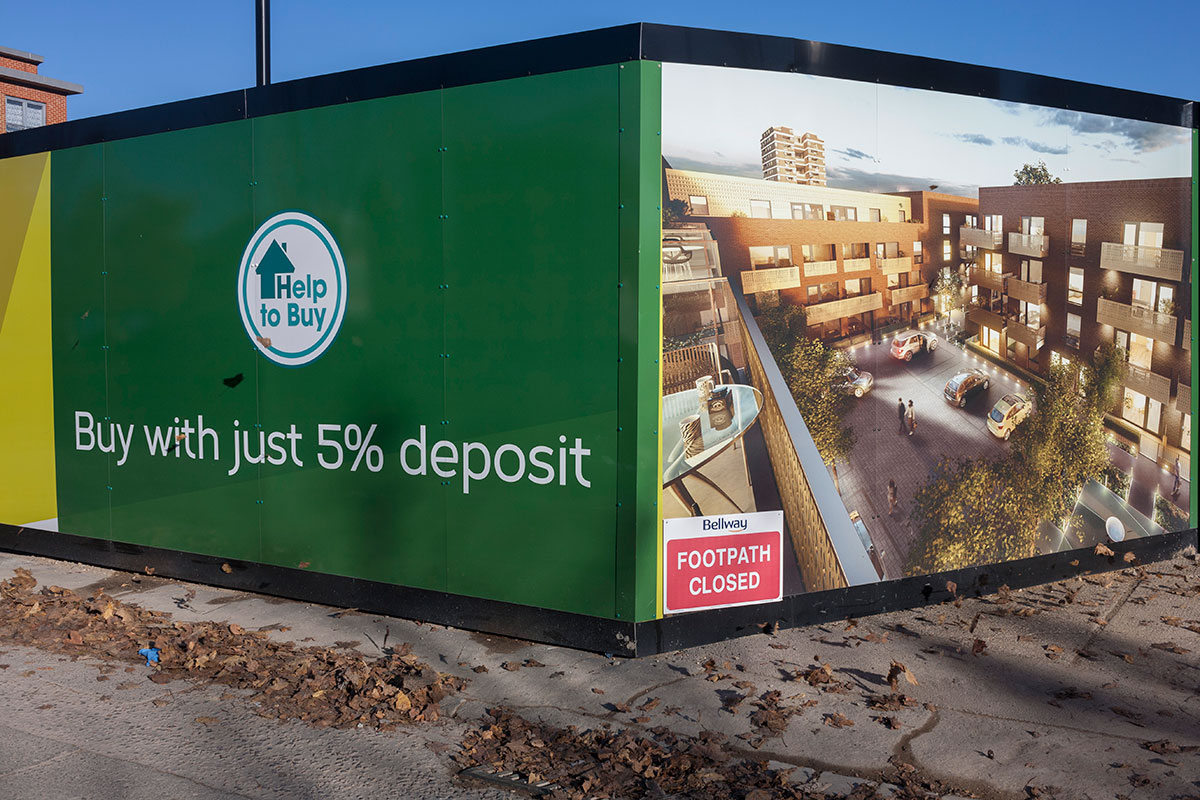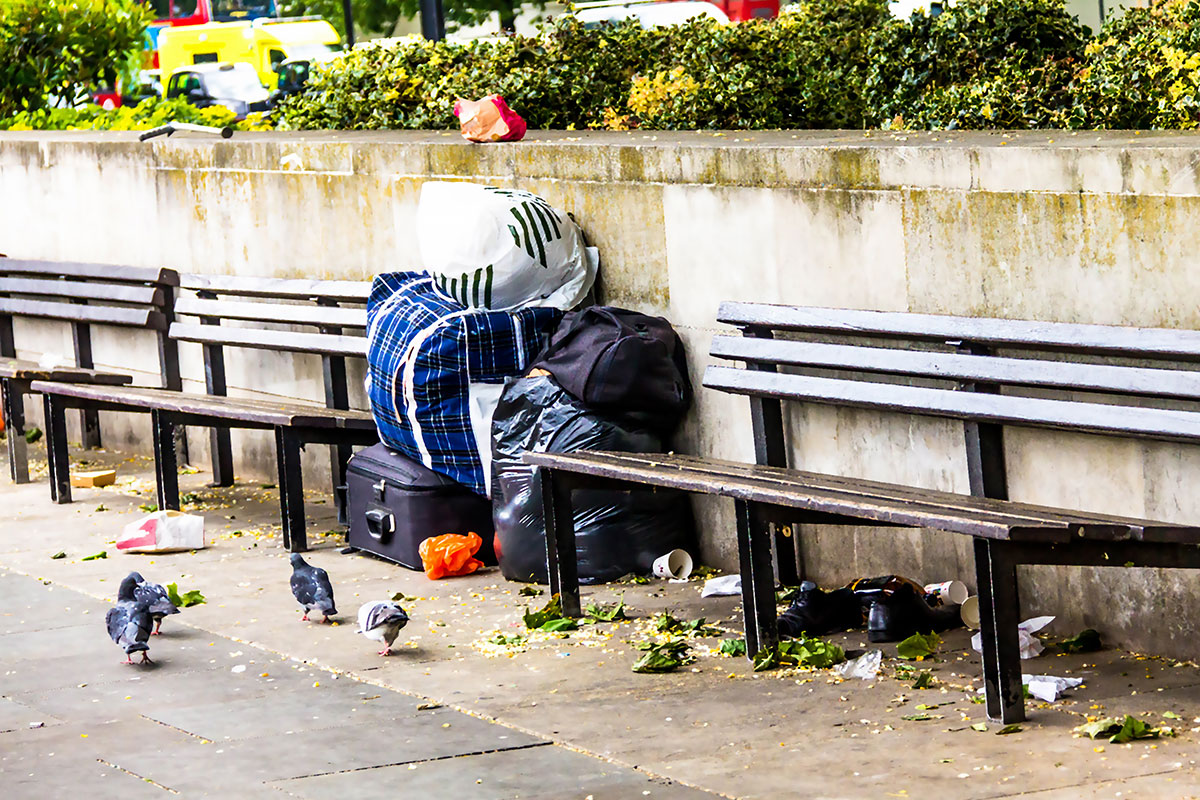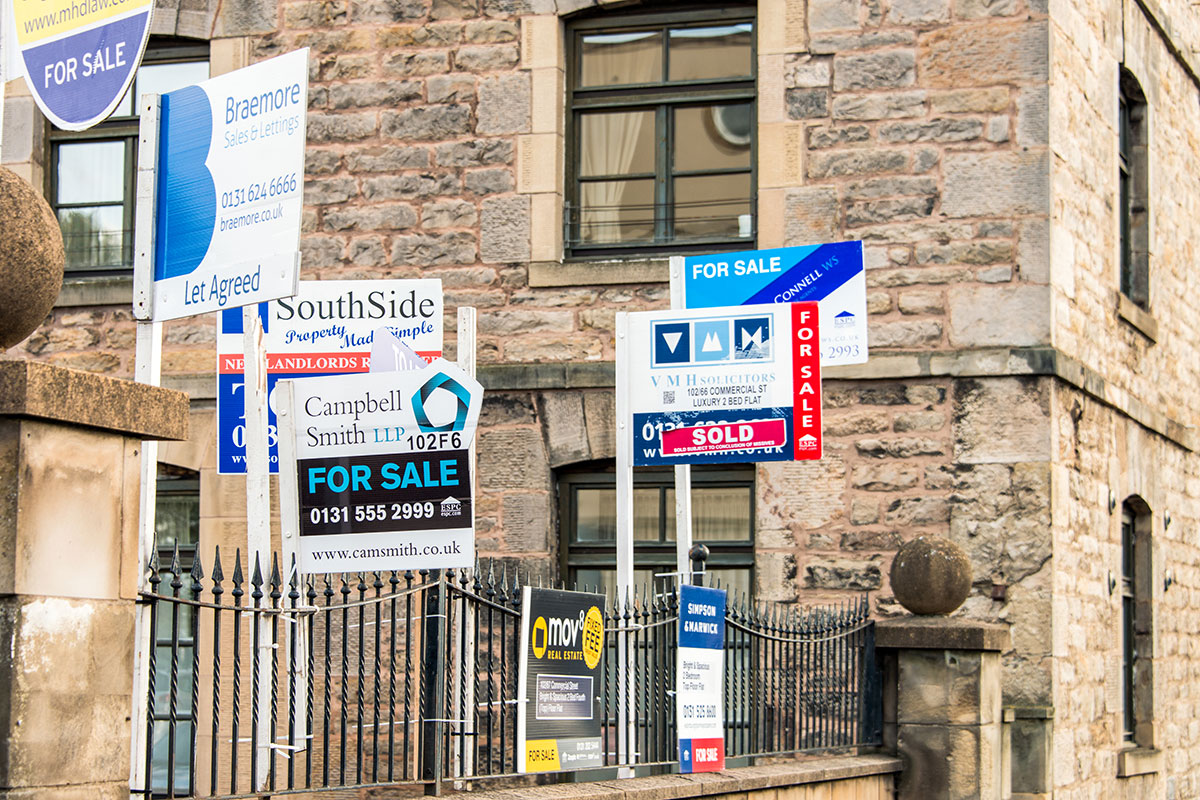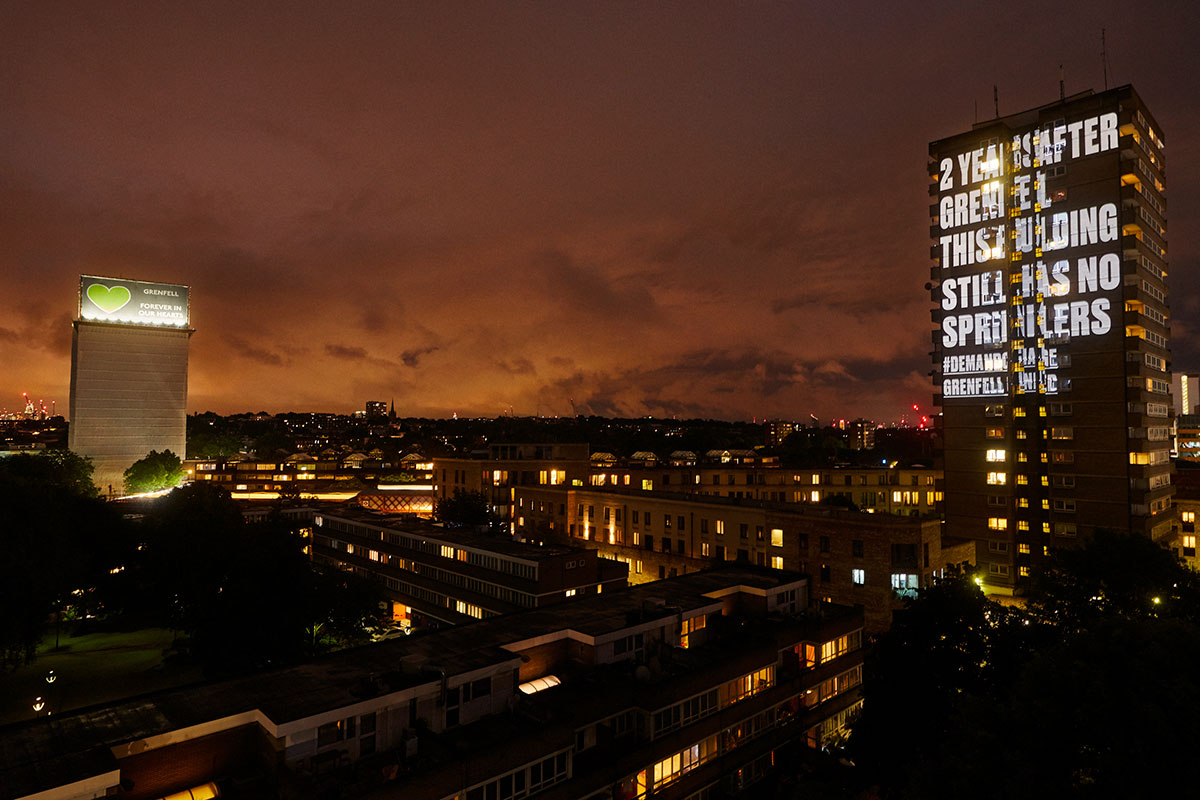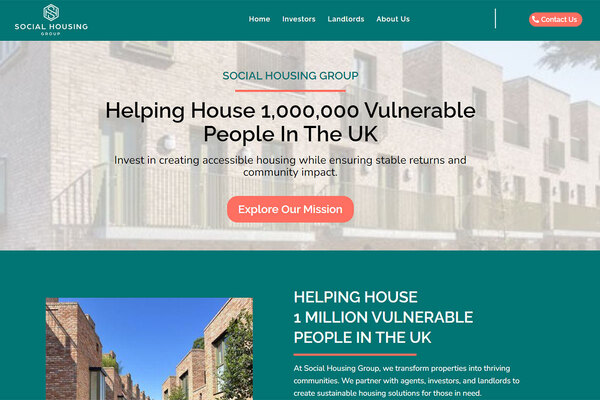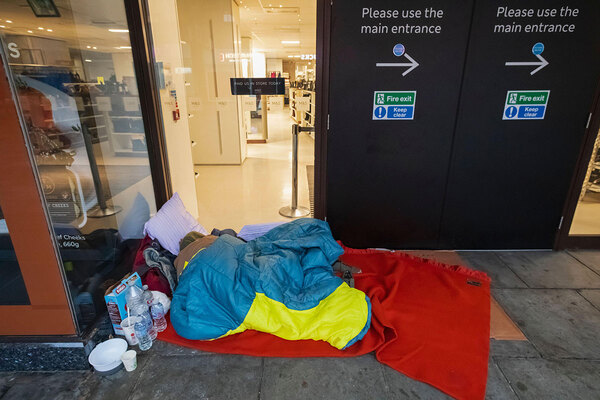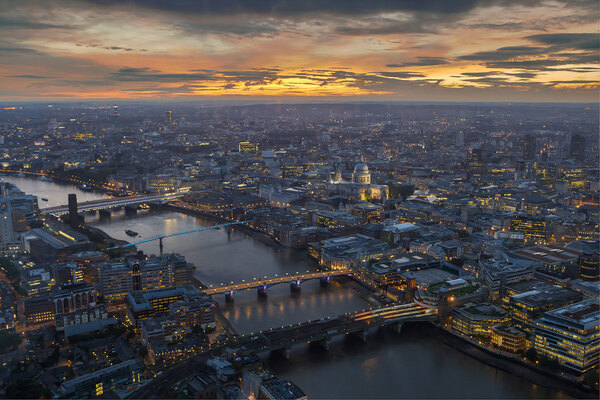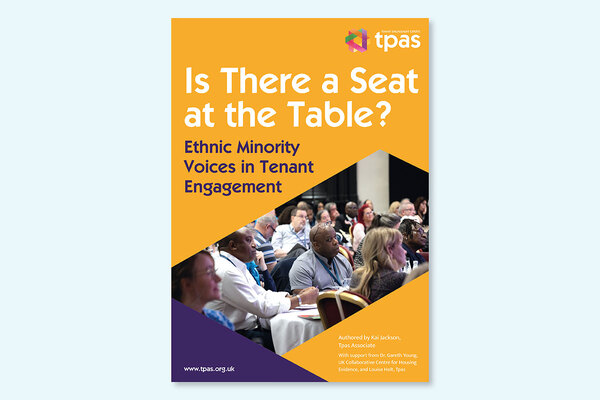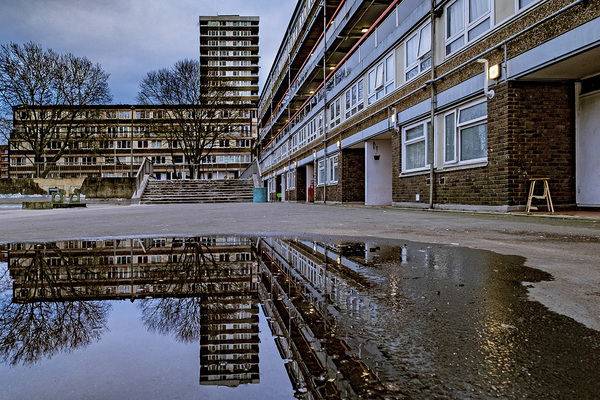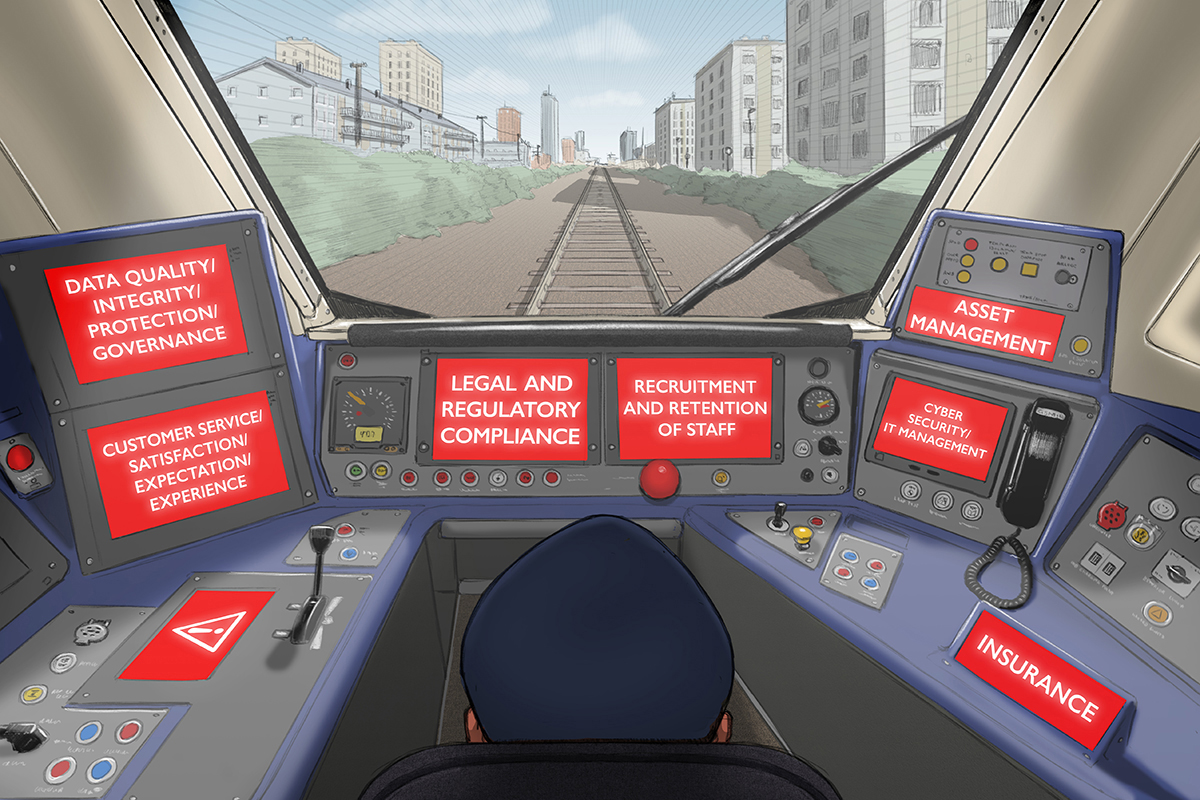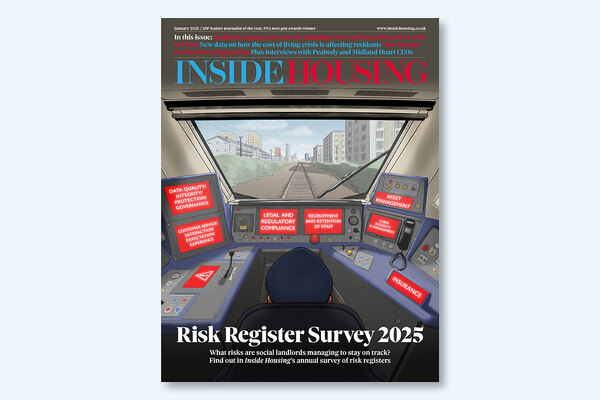You are viewing 1 of your 1 free articles
Housing in the 2010s: Inside Housing’s review of the past decade
Jules Birch looks back at the biggest issues in social housing over the past 10 years and how these moments have set up the key battlegrounds for 2020. Photography by Getty, Grenfell United and Lucie Heath
It was a decade of four elections, four prime ministers and three referenda. It began in the midst of a global financial crisis and ended with the political crisis of Brexit and was scarred by the disaster at Grenfell Tower.
All but 15 of the 520 weeks in the 2010s had a Conservative prime minister but four different governments brought four different approaches. David Cameron was all about cuts in the coalition, followed by radical (but mostly failed) marketising reforms once he had elbowed Nick Clegg aside. Theresa May brought a profound change in rhetoric and some significant changes of substance. Boris Johnson shifted the emphasis back to homeownership.
Fire safety
Timber-framed Richmond House in Worcester Park, south-west London, where a fire ravaged the building in September last year
Fire safety is essential to any review looking at the past decade in housing, after 72 lives were lost at Grenfell Tower in June 2017. Even before the start of the second phase of the inquiry, it seems clear that the system failed on just about every conceivable level amid what one expert witness called a “culture of non-compliance”.
Fire safety should have been top of the agenda long before 2017. The Lakanal House coroner’s recommendations made in 2013 were not acted on and warnings from other major fires at home and overseas were ignored.
The immediate trauma for Grenfell families and survivors was followed by a broader crisis. There are still more than 300 buildings with the same sort of cladding as Grenfell and thousands more with material that may be just as combustible. With residents living in fear in homes that are currently worthless, the sense was of a government running to catch up in its response – and failing miserably so far.
Social housing
The Spending Review in 2010 was seen by many as the start of the slow death of social housing. Investment was cut by two-thirds and funding diverted from new homes for social rent into a new affordable rent programme at up to 80% of market rents. Landlords were encouraged to convert tenancies of existing social rent homes to affordable rent as they fell vacant.
The majority Conservative government elected in 2015 seemed set to administer the coup de grace with a manifesto promising to extend the Right to Buy to housing association tenants, sell off the most valuable council homes and introduce fixed-term tenancies and higher rents.
And yet much of that 2015 agenda dissolved as it confronted the practicalities of funding the Right to Buy discounts and the implications of forcing tenants into more insecure and expensive homes. In the wake of the Brexit vote, a change of prime minister and Grenfell, the government restored some funding and abolished the borrowing cap for council housing.
Housebuilding
Across all parties, targets of first 200,000, then 250,000 and finally 300,000 new homes a year were seen as the key to moderating house price inflation and making homes more affordable. There was even talk of radical land reform.
The results were impressive on one level. There were 241,000 net additional dwellings in 2018/19, almost double the level of six years ago. For house builders fuelled by billions of pounds worth of subsidies from the Help to Buy programme and cuts in red tape, profits, dividends and executive bonuses soared. However, that lost red tape allowed developers to evade contributions to affordable housing and convert offices into tiny flats via permitted development. The rise in new build was accompanied by a leasehold scandal as house builders used freeholds and ground rents to add to their profits.
The decade ended with a Conservative manifesto that downgraded the government’s ambitions to a million new homes over the next five years – an annual rate 20% lower than last year.
Benefit cuts
The 2010 Spending Review introduced the first in a wave of welfare ‘reforms’. For private renters that meant restrictions on the Local Housing Allowance from 2011. For social tenants it started with what became known as the bedroom tax in 2013.
For both it meant an overall benefit cap and cuts, and then a four-year freeze in most working-age benefits. Above all, it meant Universal Credit, the radical reform that Sir Iain Duncan Smith insisted would make poorer people better off in the face of all evidence to the contrary.
For social landlords, it meant engaging with their tenants to stop those cuts turning into rent arrears. It also raised new moral dilemmas about access to tenancies and evictions.
While some planned cuts were withdrawn, the overall impact of the 2010s was to break the link between benefits and rents. And the effects will be felt long into the 2020s as the roll-out of Universal Credit continues.
Homelessness
Benefit cuts translated directly into big increases in homelessness.
The number of families in temporary accommodation in England rose from 50,000 to 85,000 over the decade, with disproportionate increases in bed and breakfast and out-of-area placements.
Rough sleeping returned to towns and cities all over the country. On the official count, the numbers rose 164% between 2010 and 2018 to 4,677 on a single night.
In 2018, the Office for National Statistics estimated that there were 726 deaths of homeless people, an increase of 51 per cent in the six years it had collected the statistics.
Political responses included the abolition of priority need in Scotland and a new system of homelessness prevention in Wales. England introduced a Homelessness Reduction Act giving local authorities a duty to prevent and relieve cases of homelessness, which received all-party support but also warnings of inadequate funding.
Tenure
The ‘slow death’ of social housing was accompanied by a continuing decline in homeownership that became headline news in the 2010s. By 2018 total ownership had fallen from a peak of 71% to just 63% and the decline in mortgaged ownership was even steeper. Ownership rates among the under-35s halved in the period.
By contrast the private rented sector boomed to overtake social housing in 2012 and become home to 20% of households by 2017.
From 2015, the government began to cut tax reliefs for private landlords. By the end of the decade, the government was consulting on the previously unthinkable end of no-fault evictions.
Devolution
Scotland and Wales abolished the Right to Buy. In the private rented sector, Wales introduced registration and licensing for landlords and Scotland open-ended tenancies and the first steps towards controls on rent increases.
The decade began with ‘localism’ being the watchword in England but only extending to areas carefully prescribed by central government. However, funding for affordable housing was handed over to the London mayor and a devolution deal followed for Greater Manchester.
Housing associations
The talk early in the coalition government was of “a decade of sector-led solutions” as austerity and welfare reform forced landlords to go it alone.
One response to that was a wave of consolidation among housing associations that reached a peak with the mega-merger between Circle and Affinity Sutton to form Clarion in 2016 with 125,000 homes across 170 local authorities.
Merger mania cooled after that, but the sense was still of a sector moving in two different directions. One way pointed to ever closer union, with larger landlords exploiting the benefits of economies of scale and greater borrowing capacity to build more new homes. The other pointed to the importance of retaining a local focus.
The decade also saw significant reforms to regulation in response to the reclassification of associations as public sector bodies and then back to private sector, the creation of Homes England and a separate Regulator of Social Housing.
Tenants
Ministerial rhetoric about “strivers and scroungers” was matched by media hostility towards benefit claimants and social housing and its residents. TV programmes like Benefits Street played on the stereotypes.
However, the decade was also marked by the rise of grassroots campaigns. Estate residents resisted regeneration. Social housing professionals started SHOUT. Private tenants formed Generation Rent to lobby for their interests. Grenfell United became a powerful voice calling not just for justice for relatives and survivors but also dignity and respect for all social tenants.
The decade began with the housing minister abolishing the Tenant Services Authority and restricting regulation of landlords to governance and financial viability. It ended with action promised to implement consumer regulation in the Social Housing Green Paper.
Salience
The widespread perception of a housing crisis affecting groups across society made housing more politically important. In 2010 just 5% of people told Ipsos MORI that housing was one of the most important issues for them. In 2019 it was 15%.
However, that was down from a peak of 22% in early 2018, and Brexit and the NHS dominated the index on the eve of the election. The decade ends with housing seemingly set to be downgraded under a new Conservative government returning to a traditional Tory focus on homeownership. The in-tray for the new housing secretary, though, is piled high with files marked “urgent”.
Timeline
2010
- Conservatives form coalition with the Liberal Democrats
- Deep cuts in capital investment in housing and housing benefit and plans for new Universal Credit
2011
- First round of cuts to Local Housing Allowance
2012
- Self-financing introduced for council housing in England and Wales
2013
- Start of bedroom tax and overall benefit cap
- Help to Buy introduced
2014
- Launch of Generation Rent and Social Housing Under Threat (SHOUT), and local campaigns against estate regeneration proliferate
2015
- Conservatives win overall majority on manifesto promising the extension of the Right to Buy to housing association tenants and sale of high-value council houses
- Spending Review includes four-year benefits freeze
2016
- Theresa May takes over as prime minister after the vote for Brexit promising “a country that works for everyone”
2017
- Seventy-two people die in Grenfell Tower fire
2018
- Housing in the title of a full member of the Cabinet for first time since 1970 as Ministry of Housing, Communities and Local Government formed
- Homes England established with a separate Regulator of Social Housing
- Cap on council housing borrowing scrapped
- Green paper promises “a new deal for social housing”
2019
- Boris Johnson wins an 80-seat majority following a general election
